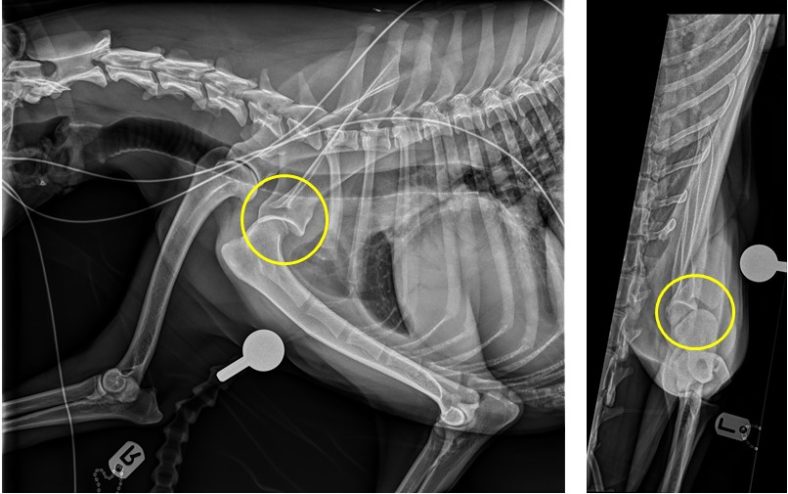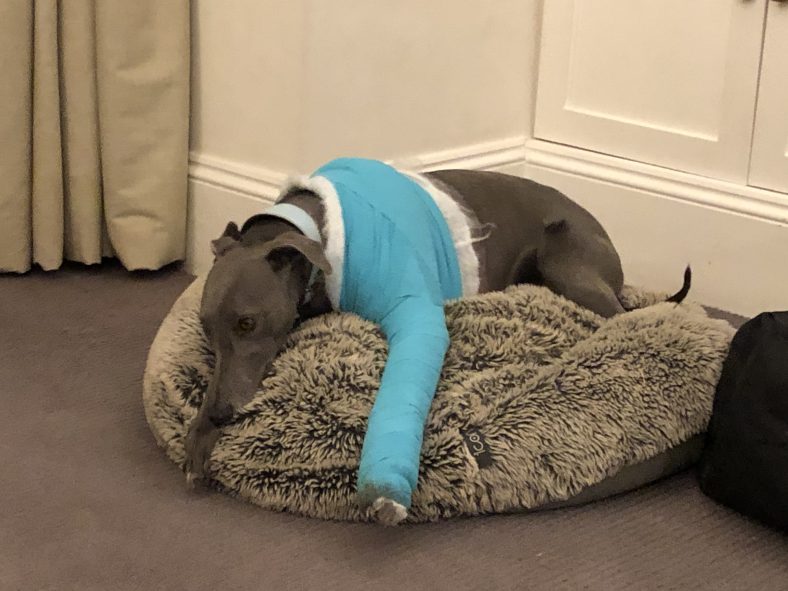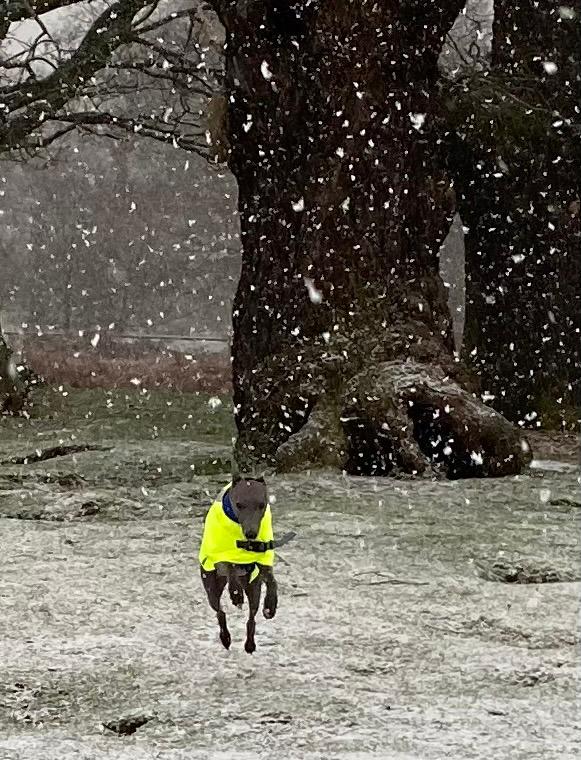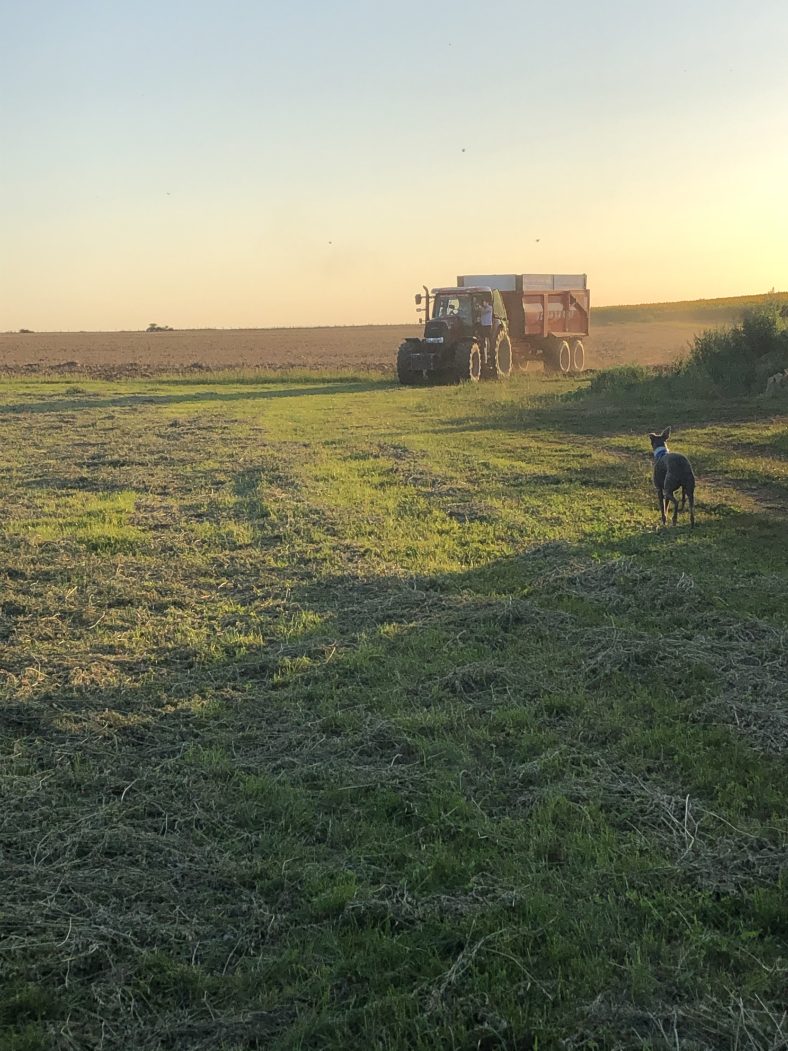Our Community
Moody’s story
Moody by name, definitely not by nature!
Moody is a very much loved member of the family. He is an eight-year-old Whippet, with a passion for running and a love of vintage cars! Moody is at his happiest when he is nestled into his family’s vintage jeep, or sniffing out new terrain whilst on an adventure.
Sadly Moody’s love for running was halted after he sustained a minor injury to his left forelimb (leg) which gradually deteriorated. Moody was struggling to put weight on his left forelimb, and would frequently rest during walks.
Moody visited Stefano, our Surgery Resident, who conducted a thorough examination to determine what may be causing the problem. Strangely, a gait analysis (a study of how Moody walks) appeared normal. However, when Stefano carefully manipulated Moody’s left shoulder, he was able to identify the root of the problem. Moody’s shoulder was intermittently dislocating (luxating) from the shoulder socket. This explains why Moody would be able to walk ‘normally’ on some occasions but would struggle from time to time. This injury is very rarely seen in the shoulder and is more commonly found in the hip joint.

X-rays taken prior to surgery. The yellow circle highlights where the left shoulder joint is dislocated (luxated).
Surgery is the recommended treatment for a dislocated joint, so Moody was promptly prepared by our theatre and anaesthesia teams. Surgical exploration was performed first of all to fully assess Moody’s luxated shoulder joint. Then a surgical technique called “biceps tendon transposition” was performed, which repositions the bicep tendon. This stops the leg bone (humerus) from sliding out of the shoulder socket joint, and therefore preventing the luxation from occurring again.
Moody had a temporary splint (called a spica splint) applied to his shoulder and forelimb to support the healing process. He was also prescribed pain relief to provide comfort and help reduce the inflammation.
A six-week period of crate rest, accompanied by a physiotherapy programme were integral to Moody’s recovery, along with Moody’s relaxing skills; “I would say that part of the reason he recovered so well (apart from his invaluable veterinary care!) is because Moody takes rest and relaxation very seriously. He loves snoozing, sunbathing and snuggling on the sofa more than any other activity (besides eating which he’s also very very good at)!”, Moody’s carer.

Moody with the temporary splint recuperating at home post-surgery.
Moody is now back up and running post-surgery! See some lovely photos below…


Thank you for taking the time to read Moody’s story. For regular patient stories, check out our Facebook, Instagram and LinkedIn.
Take care,
Team Ralph
